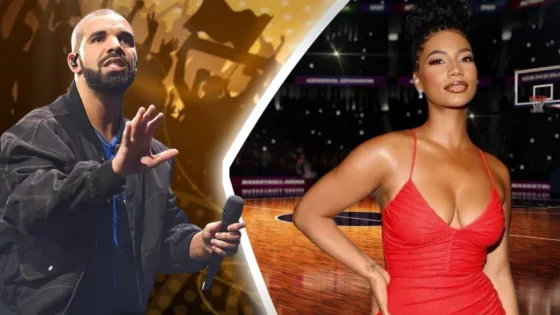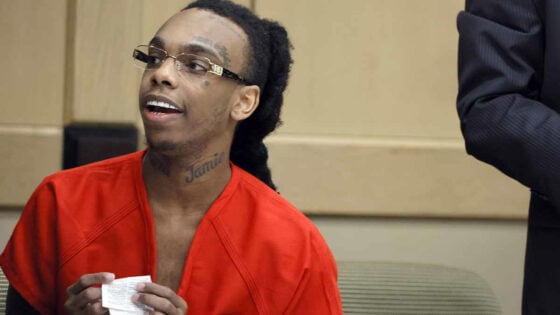The 50 Best Films of the 2010s: Part Four
As we move further up the list of our staff’s picks for the Best Movies of the 2010s, more consensus begins to emerge from the writers, even if there are still plenty of champions for films that have been left behind. As stated previously, it’s nearly impossible to make lists like this that include everyone’s favorites, but as our collective taste starts to take shape, a clearer picture develops of just what Goomba Stomp’s film section, dubbed Sordid Cinema, is all about. Our writers span the globe and a wide spectrum of movie preferences, but the closer we get to the end, the more we start to find common ground. The list continues below!
****
20.) Black Swan
Darren Aronofsky has long been one of modern cinema’s most fascinating filmmakers. Since making a big splash in the 90s with Pi and Requiem for a Dream, Aronofsky has gone on to challenge movie-goers with increasingly dense and uncompromising works.
Black Swan may be his magnum opus in this regard. Nina, played by a never-better Natalie Portman, is a perfectionist. Honed by her ballerina mother into the perfect dancer over the course of her life, Nina pushes herself to endless lengths in order to be the best. However, when artistic director Thomas Leroy tells her she lacks passion in her audition for Swan Lake, she aims to explore the aspects of life that she’s been missing in hopes of capturing the passion the role requires.
Though the twist may be predictable, it’s almost secondary to what Black Swan is trying to do. A deep, dark look into the abyss, Black Swan is a film about the singular obsession of perfectionism, and how it can rob young athletes and performers of anything resembling a normal life. As such, Black Swan is as much a tragic cautionary tale as it is an erotic descent into artistic madness. (Mike Worby)
19.) Dunkirk
The pure magic of cinema is on harrowing display in Christopher Nolan’s exquisitely crafted thriller about the evacuation of the British and other Allied forces from the French coast during World War II. Dunkirk jettisons many of the storytelling crutches so many war movies have come to rely on, replacing those blunt philosophical speeches and manufactured character moments with the kind of exacting visuals and visceral sound design that communicate precisely everything an audience needs to know about the terror depicted. Not a minute is wasted in exposition; the images tell the tale here, taking the medium back to its roots. Through pictures Nolan builds an army of genuine people, their mouths ominously silent but their eyes and actions instantly relating volumes. His frame then constricts their freedom (and ours), ramping up unease by showing us packed lines of men desperate to escape, crammed onto piers just waiting, looking out to the vast ocean of blue skies and open water that offers something so close, yet so far.
Once it has us wound up, Dunkirk yanks on the thread, unspooling in a furious assembly of bullet pops, swooping dogfights, and fiery sea battles, all working in harmony to support each other. Rarely have I felt so utterly helpless in response to something so simple as the whine of an airplane engine, but Nolan pulls the strings perfectly, effortlessly navigating the peaks and valleys of tension and release. That he does this without a more traditional dialogue-heavy script is especially impressive — a reminder of how affecting cinema can be in its purest form. Dunkirk pushes the action genre forward by looking back, a triumph of filmmaking that dares to believe in the core fundamentals of movies. (Patrick Murphy)
18.) Shame
While many films have been made in and around erotic subject matter, few have dared to look at sex as something as terrifying as it is pleasurable. Writer-director Steve McQueen’s Shame dives into the mouth of that very beast, digging up some unsettling and unsightly truths as a result.
Brandon (a chillingly detached Michael Fassbender) walks through his life as though in a fog. Everything in his existence centers around the next sexual encounter, the next orgasm. When he’s not trawling for married women on the subway or picking up girls at the bar, he’s compulsively masturbating on his work computer or planning his next seduction. Most directors would have a hard time making gorgeous people having sex seem so monotonous and unenjoyable, but somehow McQueen gets under the glamor of what society tells us about sex in most entertainment in order to create something truly ugly.
An utter tour-de-force, Shame is to sex what Requiem for a Dream is to drugs or Leaving Las Vegas is to alcohol: a truly unsettling look into an addiction and how it can destroy someone. (Mike Worby)
17.) Upstream Color
Polymath Shane Carruth lay dormant for nearly a decade after his Sundance cult hit, Primer, igniting a fury among online film enthusiasts over what his next project might be. It was well worth the wait. Rather than find a franchise meal ticket, the do-it-yourself filmmaker doubled down on his impenetrable storytelling style, offering another low budget sci-fi wonder. If Primer was the heady hard sci-fi movie nerds had been craving in the 2000s after years of execrable big-budget efforts, then Upstream Color was its more esoteric and empathetic sibling — “soft” sci-fi for the millennial era.
It’s an age-old story of enigmatic organisms creating a symbiotic relationship between strangers (and pigs), and a couple’s quest for purpose and agency. Whereas a lesser effort might’ve rested on its metaphorical laurels of biological symbiosis standing in for the codependency of romantic relationships, Upstream Color says “hold my worm beer!” Repetition, abstraction, visual patterns, and aural disorientation assault the viewer into the subjective minds of its tragic couple. For some, it’s just a headache, but for those who vibrate with its mesmerizing wavelength, it’s a movie to dissect like a great piece of literature. (Shane Ramirez)

16.) Arrival
Like all good science-fiction, Arrival has a clear message. Avoiding the negativity that often comes with an alien’s First Trip to Earth and the destruction that ensues, the heptapods that grace this world with their presence in Denis Villeneuve’s 2016 film have a rather different story to tell, setting them apart from other extra-terrestrials seen in cinema.
The aim of the game is communication; this is key. It’s only fitting that our protagonist is linguist Louise Banks, and even better that she be played by the undervalued Amy Adams. Haunted by a tragic event, there is nobody more suited to the role, as Louise quietly and subtly tries to make sense of the major event she finds herself in. It’s a role that should have won her accolades and yet didn’t due to its lack of showiness or physical alteration, but it’s one of the best of the decade, neither overshadowing the main event or alienating the audience — she is the beating heart of what might otherwise seem a cold space.
Stylistically, Arrival is cold; Louise lives alone in a large, mostly monochrome home surrounded by large windows, whilst the aliens inhabit black, convex-shaped ships filled with white fog. However, unlike sci-fi of a similar aesthetic (think 2001: A Space Odyssey), its optimism and hope come from a universal theme: that of working together and putting aside our differences for the good of our species. The heptapods have already learned this, but in order to survive, so must the humans, and it’s this journey that connects us emotionally with the film.
When all is said and done, Denis Villeneuve may have a more prominent classic up his sleeve, but for the 2010s, this often overlooked alien movie is his best to date. (Veronica Cooper)

15.) Under the Skin
Scarlett Johansson’s eyes scanning the streets of Glasgow, crowned with jet-black hair. Hapless yet serene men sinking step by step into a viscous black nothingness. An infant shrieking alone on a beach, fierce waves crashing too closely for comfort. Slurry, red gore pouring into an incandescent opening to…where, exactly? A man with facial neurofibromatosis wandering naked in the countryside. A wisp of black smoke dissipating between snowflakes. If it can garner no other praise, Jonathan Glazer’s first film in over a decade can at least claim some of the only truly iconic images to etch themselves onto the retinae of moviegoers in quite some time.
With some filmmakers fleeing to television in search of new modes of storytelling, it has been left up to true visionaries to push the boundaries of the medium and fight to keep it relevant. Under the Skin is a testament to the art of careful subtraction. Glazer pared down the film’s source material — Michael Faber’s novel of the same name — to a small collection of characters, visual motifs, and key incidents, using his decades-honed eye for conjuring imagery that packs a subconscious wallop to do the heavy lifting. Thanks to Glazer’s minimalist approach, Under the Skin gains an immense allegorical power that no other film of the decade could match, touching on identity politics, eroticism, the [assignation of your choice] gaze, and especially the power and the dangers of empathy.
Through it all, Johansson’s disquieting performance acts as a constant magic trick, a sort of reverse uncanny valley. Whether or not Glazer takes another decade to follow it up, Under the Skin will stand as one of the totemic features of both arthouse and genre filmmaking for a very long time to come. (Simon Howell)
14.) Call Me By Your Name
Luca Guadagnino’s adaptation of the André Aciman vivid coming-of-age novel was a major step forward for gay cinema. Not only is it one of the greatest (if not greatest) big-screen stories ever told of first love, but it’s one that also transcends the same-sex dynamic of its protagonists. Scripted for the screen by James Ivory, Call Me By Your Name follows a 17-year-old teenage boy (Timothée Chalamet) living in the picturesque Italian countryside who falls into a passionate fling with a 24-year-old American graduate student (Armie Hammer) who’s come to study abroad for the season. Amid the sun-drenched splendor of their surroundings, Elio and Oliver discover the beauty of awakening desire over the course of a summer that will alter their lives forever.
There are plenty of reasons to praise Call Me by Your Name: chief among them, Sayombhu Mukdeeprom’s gorgeous cinematography, Guadagnino’s masterful direction and Walter Fasano’s patient editing which allows scenes to play out in long, uninterrupted takes, capturing the rollercoaster of emotions Oliver and Elio experience during those glorious summer days— but it is the extraordinary performances of the lead actors that makes Call Me by Your Name one of the best films of the decade. One can run out of superlatives to both Hammer and Chalamet who give heartfelt performances as two young men unsure about themselves, their lives, and each other. When Oliver suggests the exchange that gives the film its title, it illustrates the deep passion felt between the two; their performance so good, one could be forgiven for thinking the actors really did fall in love on set.
Despite some scenes that may make some viewers uncomfortable (see the juicy peach scene), Call Me by Your Name is erotic yet never graphic— in the end, it’s really a movie for incurable romantics and a film that sweeps you up and never lets go until the end when it leaves you emotionally devastated. The entire finale which holds the camera on Chalamet’s silent face for what seems like an eternity, will linger in your memory long after the credits roll. As we watch him desperately trying not to cry and grow older before our eyes, we know he’ll eventually move on and love again, but that doesn’t change the heartache both he and we feel in the moment. Call Me by Your Name isn’t just an LGBT classic; it’s one of the great movie love stories ever made, and one of the best films of the past ten years. (Ricky D)
13.) Drive
Ryan Gosling excels in playing shut-off characters, men who reveal nothing about themselves to others, yet are guided by a strong internal code; think Place Beyond the Pines, Blade Runner 2049 , or First Man. His performance as a mechanic and stuntman moonlighting as a getaway driver in Drive puts his blank-faced expression to its best possible use, making him a modern Western hero trapped in neo-noir Los Angeles.
What makes the story — Walter Hill’s The Driver crossed with Le Samourai — so memorable is how romantic its vision is. The Driver’s relationship with his neighbour, Irene (played expertly by Carey Mulligan), forces the usually remote man to suddenly develop a heart, giving us an unusual level of emotional investment in the film’s car chases and violent scenes. Abetted by class performances from Bryan Cranston, Ron Perlman, and Albert Brooks, Drive easily asserts itself as the best pure crime movie of the decade.
A large part of the success of the movie is down to its song choices. Has there been a soundtrack that quite defined the vibe of the decade like the one for Drive? The futuristic synth-wave sounds of “A Real Hero,” “Nightcall,” and “Under The Spell” cast a seductive spell, instantly immersing us into the life of our reserved driver hero. Inspiring its own micro-genre of music, Drive’s aesthetic is instantly recognizable, immediately recalling empty, light-strewn streets, sleek cars, and Los Angeles sunsets.
Inspired by his biggest success, Nicolas Winding Refn built upon Drive’s aesthetic with challenging pieces such as Only God Forgives, Neon Demon, and Too Old To Die Young. While those films can be a bit obtuse, Drive that remains his most exhilarating and accessible work. Expertly straddling the line between genre and experimentation, it satisfies both arthouse and Grand Theft Auto fans — a true event movie with a little something for everyone. (Redmond Bacon)
12.) The Master
For Paul Thomas Anderson, the past decade has been about expanding the breadth and virtuosity of his craft. He had shown himself to have unimagined depths with There Will Be Blood (2007), but it wasn’t until his sixth feature that he would reveal himself to have a seemingly limitless range. His other films of the decade, Inherent Vice and Phantom Thread, could just as easily occupy a spot among the best of the decade, but it’s The Master that remains his boldest and most breathtaking vision.
The lead-up to The Master’s release led many to believe that it would be Anderson’s “Scientology movie,” a work inspired by the religion/cult’s founding which he had gotten his friend Tom Cruise’s blessing for. Yet it turned out to be a rather limiting way to view the film. Yes, there’s a 1950s stand-in for Scientology, but The Master is far more concerned with the equally loving and hateful relationship of two men, destined to be separated by fate and circumstance.
Joaquin Phoenix, working on a level most great actors have only imagined, plays Freddie Quell, a disillusioned alcoholic with serious psychological damage from the Second World War. We’re introduced to him in a stunning and anxiety-provoking shot as he dangles — passed out — from the mast of a naval cruise, high above the Pacific. He mixes dangerous and unorthodox drinks from whatever he can find (paint thinner, rocket fuel, industrial alcohol), which seem to be slowly hollowing out his body.
As he tries to adapt to civilian life (and utterly fails), Freddie meets Lancaster Dodd (Philip Seymour Hoffman, never better), a charming and sometimes boorish stand-in for L. Ron Hubbard. Lancaster runs his own religion, which sometimes forces them to take to the sea on a massive yacht, and even runs them afoul of the law. Quell becomes his assistant of sorts, but only partly; he’s a true believer who doesn’t believe in anything. No other film of the decade has had two actors working so masterfully with each other. Phoenix is like a rabid animal at times, but Hoffman’s method acting is maybe the more impressive performance. He creates a vividly realized portrait of a power-hungry but lonely man that feels completely of this world. Phoenix is amazing and it’s hard to look away, but he’s off in the stratosphere somewhere.
Adding to the impressive casting (which also includes Amy Adams and Laura Dern) is Robert Elswit’s cinematography, which features the vivid colors of classic technicolor without the otherworldly effect. Jonny Greenwood’s score is just as brilliant, and much more subtle than the masterpiece he composed for There Will Be Blood. Anderson ties these elements together in a way that allows us to luxuriate in the details as much as we’re invested in its story and characters. What’s most impressive about the film is that Anderson somehow managed to follow it up with two other great films. One masterpiece would have been enough for the decade, but he keeps churning them out. (Brian Marks)

11.) The Tree of Life
Terrence Malick has been in dialogue with the natural world since his first film, Badlands (1973), but it wasn’t until his 2011 masterpiece The Tree of Life that he finally gave the universe its due. Where previously he had paused his tales of murderers on the run or soldiers marching toward certain death to ponder the creatures all around us, now he was willing to bring everything to a screeching halt to explore the creation of the cosmos. In eighteen minutes or so, he goes from depicting the great burst of energy that birthed the universe to showing the dinosaurs and prehistoric creatures that once ruled our Earth, and then suddenly we’re back again in 1950s Texas. It’s a flex that shouldn’t work on paper, yet Malick shows why he’s one of our greatest living directors by making the grandest subject imaginable as gorgeous and enthralling as the trials and tribulations of one young family.
The semi-autobiographical story follows Jack O’Brien, the youngest of three boys, as he grows to be a fiercely conflicted child (a revelatory Hunter McCracken, who hasn’t appeared in a film since) rebelling against the strictures he’s been raised with, to a dour and regret-filled adult adrift in a sea of glass and concrete (Sean Penn). Early in the film, we see his parents (Jessica Chastain and Brad Pitt, both at the top of their game) a decade later as they receive a telegram informing them that Jack’s younger brother has died. It’s only then that we go back to the beginning of time, and then jet forward to the 1950s, when the family is blissfully unaware of their future heartache. The Tree of Life’s masterful editing (by a team of five) contextualizes every incident with Jack’s family so that we’re constantly contemplating the transitory nature of life, even when things seem as good as they’ll ever be.
But the more radical move is the way Malick seems as invested in this portrait of his own family as he does with all of creation. Through his sublime visuals (aided by Emmanuel Lubezki’s ever-searching camera) and impeccably curated selection of romantic and contemporary classic music, he puts the beginning of life on Earth and the beginning of a single child’s life on the same grand scale. Every Malick film invites viewers to contemplate the wonders of life, but never quite as intoxicatingly as The Tree of Life. (Brian Marks)
PART ONE | PART TWO | PART THREE | PART FOUR | PART FIVE


































